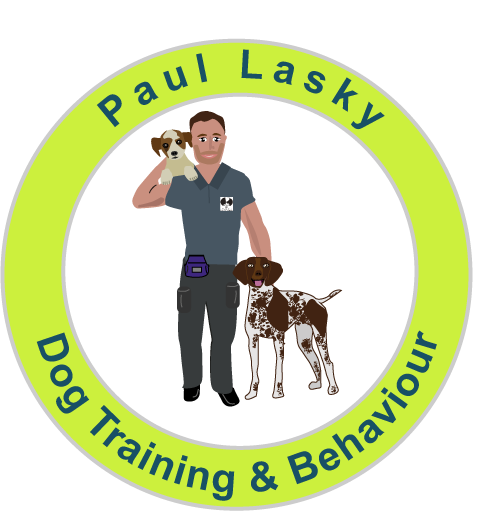Dog Training – Help! Why all the conflicting information?
Your neighbour says use a harness, your cousin says don't use a harness. Your friend says raw feed, a dog walker says use brand x, the television says take the bowl away from the dog to show it “whose boss”. The trainer says add food to the bowl to create a positive association, the internet says shake a can of coins at the dog to stop it barking. The dog trainer says reward them for doing something alternative to barking, your dentist says don't play tug of war. YouTube says play tug of war, but always win, another video says it’s fine to play tug of war. The breeder says let the puppy out in the garden right away, an article says wait until vaccinations are live to go in the garden. A slimy chap on Sky TV says eat before your dog or your dog will obtain your internet banking passwords and transfer the money to Mexico. OK, enough of this, my head hurts.
If your head hurts too, then well done, because you are clearly putting a lot of thought into your dog and that is amazing! Lets put this into perspective.
Everyone who gives you advice will believe in what they are telling you. There are a number of reasons for this. Generally speaking it will be because it has “worked” for them or at the very least they believe it has worked for them. Unfortunately, every single dog is an individual and every household is different, so what works for one dog does not universally transfer to another dog. Even more worryingly, some will believe what they have seen in a heavily edited TV show and pass this information on. This renders a lot of blanket advice useless for your dog. I'm afraid you are going to have to dig a bit deeper.
Taking the paragraph of snippets above, it is not easy to discern which bits are “right or wrong”. It's a bit of a mess isn't it. Some of it is OK general advice, some of it is OK for some dogs and not for others and some of it is plain wrong for all dogs. Lets break it down.
First and foremost, any advice that involves exposing your dog to something unpleasant or forcing something upon them, is the wrong advice and should be ignored.
For example, shaking a can of coins in the dog's face to stop it barking. But, it worked for uncle Fester right? Well, did it work for uncle Fester or did the dog just end up frightened, flinching and suppressing all behaviours for uncle Fester? What about grabbing the bowl and taking it away whilst the dog is eating? It worked for the placid Guide Dog puppy who was bred for good temperament, so it must be right? Sorry folks but that dog was never going to be possessive over its food anyway. So taking the bowl away was simply a self fulfilling prophesy. It was always going to work with that dog! But when another 5 families did that with their working gun dogs they ended up with resource guarding aggression.
This is never safe advice to pass on to anyone or to take and use on your dog! So if someone gives you advice, that involves anything unpleasant toward the dog, just smile politely and carry on with your day.
The 2nd category, is things you will need to make a decision on yourself.
These include the classic questions of when to neuter, when to let the puppy out in the garden and what to feed. There are risk factors to all and it is your decision. You can research and decide. Personally, in the absence of any medical requirements I would let my puppy reach adulthood before neutering and if there is no imminent disease risks in the area, I would carry out a small amount of outdoor safe and controlled pre-vaccination socialisation and habituation.
Food-wise, you can seek advice from a nutritionist or simply feed what gives healthy bowel movements and steady behaviour, there is no one food that is good for every dog, as every dog's gastro system is different. This is all your choice, seek guidance from your vet, trainer and nutritionist and make your decision. It is worth noting that if your dog is very nervous, to hold off neutering and speak to a trainer or behaviourist, as it can have a bigger baring on your decision.
The 3rd category, is good common sense general advice that works for all dogs.
For example, use well time rewards to teach dog behaviours you like, that will replace behaviours you don't like. For example, training a puppy to sit down, instead of jumping up. Never force a dog to face something it's scared of, up close with no escape route. Socialise puppies slowly to new things.
The 4th category, is advice that works for some dogs but not for others.
For example, one dog responds to “Fido come” and another responds better to a whistle. One dog loves to do a spin or roll over trick but another dog doesn't like human hands going over its head and instead prefers sniffer games and reassurance. More examples, your puppy prefers the option to sleep on a cool floor over a warm bed. Your large breed finds it hard to lay down and stand up too many times so you decide to do a sit at training classes instead of a down. This requires observing your dogs likes and dislikes and making decisions based on them. A dog trainer can help you make these observations.
The 5th category, is wives tales.
Here are some classics in italics, always go through the door first and eat before your dog or your dog will dominate you. It is actually good practice to go through the door first for safety reasons, it has nothing to do with your dog being dominant. Eating before your dog will not convey anything in particular to your dog, but may make them frustrated and cause them to beg more. Never let your dog win tug of war. Again, letting your dog win at tug of war will not make them dominant. In fact, it's nice for your dog to win, it will increase confidence and make them want to play more. The dog is 99% wolf. Humans are 60% banana and 99% chimp. They are all different species, it is utterly irrelevant that dogs are 99% wolf. When was the last time anyone trained a wolf anyway, we are training dogs, not wolves. Generally speaking, random facts such as these are old wives tales! And yes the study done on wolves was scientifically disproved many years ago.
This piece is not meant to be a definitive guide. My aim in writing it, is to focus your mind on just how complex it is and how dangerous blanket advice can become. Dog training has moved on a lot in recent times, with a plethora of new research and methods, which means it really is worth investing in some training sessions with a trainer listed on the APDT, UK website. If you cannot find someone on there near you, then try the ABTC website.
If you are ready for this exciting and rewarding journey with me, please go to my services pages. Either for 1-1 puppy training or 1-1 dog training, I look forward to helping you. Send questions via text or WhatsApp and I will always respond within a day or two maximum.



